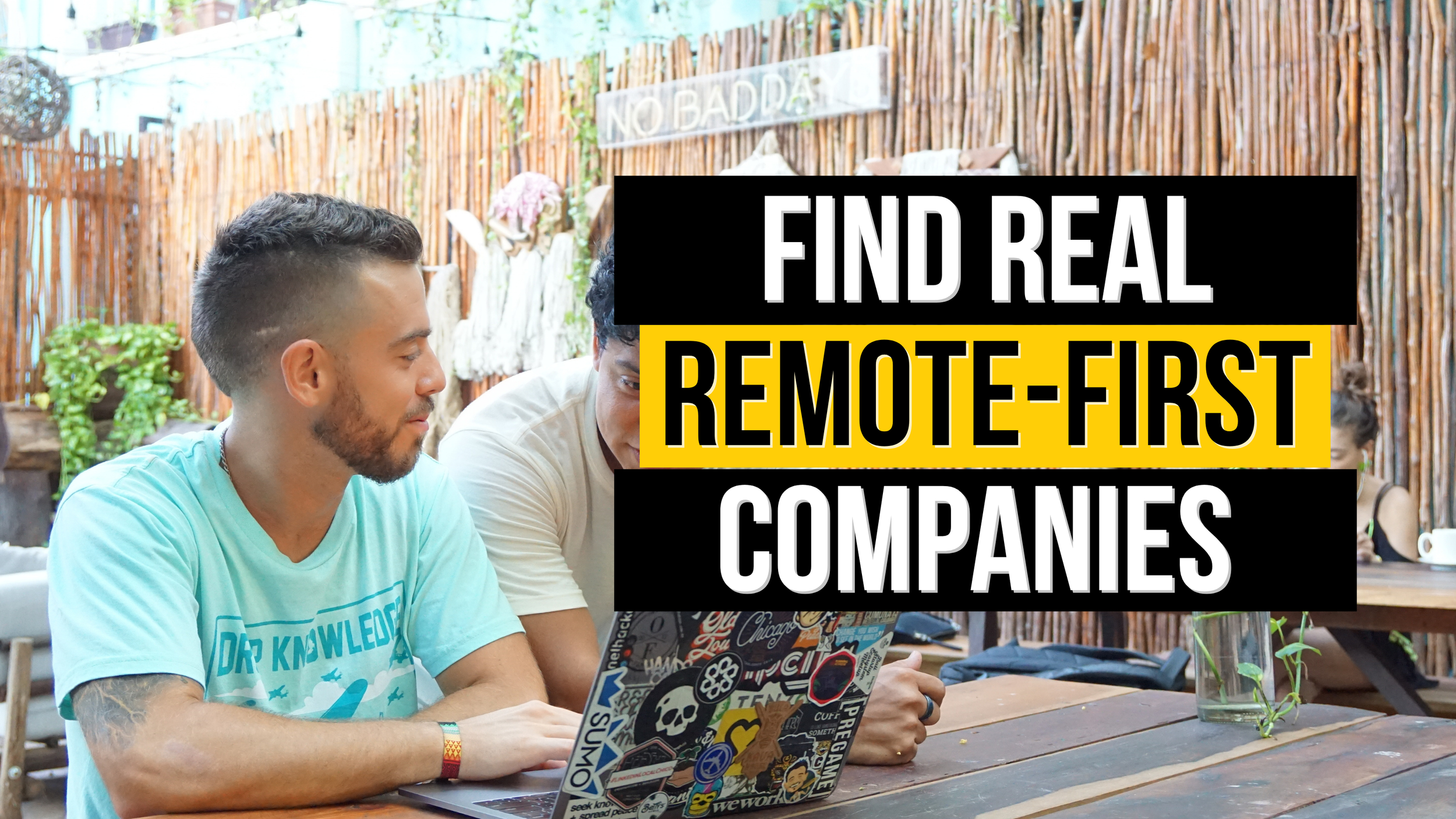How To Find Real Remote Companies
When one uses the term “remote work,” it can indicate a wide variety of circumstances. It’s helpful to get clarification, especially from companies you’re interested in working for, exactly what their version of “remote” actually means.
Because of remote work's infancy in the mainstream, there is no standardization around terminology yet.
Different experts, hiring websites, job boards, and the average layperson uses different jargon, companies don’t have firm remote policies and job seekers are often left confused about what to believe.
It takes some additional research and critical thinking, but it's worth it. In this post, I'll cover a couple of the most prevalent belief systems that shape a company's version of "remote work" and show you how to actually find those remote-first companies.
1. The Important Distinction Between Remote-First and Remote Friendly
One of the most important distinctions you can make as a remote job seeker is understanding a company's BELIEFS about remote work and the intentionality in which they use it. This shapes their policies, culture, and ultimately the support you receive as an employee.
Not All Remote Work is Created Equal
Companies look at remote work differently based on numerous factors: tax laws, regulations, location of incorporation, leadership experience, and much more.
Think about it like this: If an organization went into business without first considering its remote work policy and the legal implications involved, it’s impossible to retroactively create that foundation of their culture. It's possible to change course, yes, but there will be many obstacles and a huge learning curve.
The Danger of Remote Friendly (aka Remote OK or Remote "By Accident")
In this case, a company may allow its employees to work remotely as a choice, but with some baggage. There’s a distinction between being OK with remote work and being remote-first. This is the difference between allowing and supporting.
As GitLab describes, “Some employers reason that remote employees are bypassing a commute, therefore no additional support is warranted.”
As a job seeker, be wary of a situation like this. In these companies, the infrastructure to promote great remote work collaboration isn’t quite there, and you may be left feeling less than valued. Many companies defaulted to this stance after becoming “remote by accident” during the pandemic, then realizing they’d lose too many good people if they forced them back to an office. But again, tolerance doesn't equate to encouragement.
The Remote-First Distinction
These are organizations that lead with remote work policy at the forefront of their culture, usually from day one. They are supportive and encouraging of remote work, and even if they have offices, they don’t centralize operations there.
“They create documentation, policies, and workflows that work when assuming that 100% of the organization is remote, even if some continue to visit a company-owned office,” notes Gitlab.
When you work for a remote-first company, the standard operating procedures, collaboration tools, and processes are intentionally designed to fit a remote workforce. Personally, I get really excited to see how many companies are starting as "remote-first" nowadays! It's quickly becoming the DEFAULT option because of all the obvious advantages.
2. How to Find Remote-First Companies
Because so many different people and platforms use the word "remote," differently, your ability to sift through the needles to find the hay will keep you from getting poked. Being armed with real-world examples and action steps will allow you to do your own research to best know what you're getting yourself into when evaluating companies you want to *potentially* work for.
Qualities to Identify in a Remote-First Company Culture
In doing research to find specific examples that distinguish remote-first cultures, I found an article on the Doist website by Fadeke Adegbuyi, called "How to Be Remote-First When You Still Have an Office."
Being friends with the legend, Chase Warrington (LinkedIn Top Voice for Remote Work and Head of Remote at Doist), I've been familiar with Doist for years, and consistently look to their teams' content as a source of truth and thought leadership in the remotosphere.
One of my favorite quotes from the article resides below:
"When companies become remote-first, they naturally become people-first. When flexibility and consideration is given to remote workers it’s afforded to all."
Simple, it seems. But what a transformational way it changes a company culture when it manifests into reality. Namely, in the way expectations of each individual starting from the top default to making life easier for remote workers. Below is a chart that compares "Remote-First" vs. "Remote-Friendly," to give more precise context:
Using this chart from the Doist article, you can get a sense of the importance that's placed on virtual communication, workflows, accessible information, and inclusion in a remote-first environment. Even if a company has an office, these particular qualities are accessible, but only if the proper expectations, policy, and culture are aligned to allow them. These are the qualities to look for in a company culture when determining if it's remote-first.
How to Identify a Remote-First Culture From the Outside
Now that we have these internal qualities of company culture as our criteria, how do we go about confirming these as someone from the "outside?"
From a high level, you can:
Use job boards and remote company databases (The Remote Job Club, FlexJobs, WeWorkRemotely, Remotive, and Dynamite Jobs are my favorites). Some others:
Once you know of a good remote-first company (like Doist), look at their company profile on LinkedIn and check "similar companies" on the right-hand side.
Find round-ups or award lists online, like this "All Remote List and Remote-First Companies List" from GitLab which identifies companies with remote culture.
Check the company's job descriptions, websites, and LinkedIn profiles... do they talk about remote work, flexibility, asynchronous work, or any other criteria listed above?
See what their own people say, either on LinkedIn, Glassdoor, or other communities they own where you can get a sentiment of how their companies feel.
Take the Extra Steps
Things online are not always as they seem (who would’ve thought!?).
Don't just take my word or any company's word for it. You'll never truly experience a company's culture until you're actually in it. The closest you can get is with conversations with real, live humans who work for, and previously worked for a specific company you're interested in.
The reason it can be really useful to find someone who previously worked at a company is that they'll have much less to lose by telling you the truth. Note, they could be jaded, too, so you always want to round out your experience with multiple informational interviews if possible. To find them, you can search on LinkedIn by "previous company."
If you’re looking for a remote job and feel discouraged or lost, it’s time for a new strategy.
I content, courses, and coaching programs to help job seekers land legitimate remote jobs for more freedom and flexibility in their lives. I’ve helped thousands of high-performing remote job seekers throughout the world learn a proven system that can give you the tools you need to succeed. If you’re struggling with your remote job search, I got you fam.
Click the button below to find the content, courses, and coaching programs that will help you ⬇️






